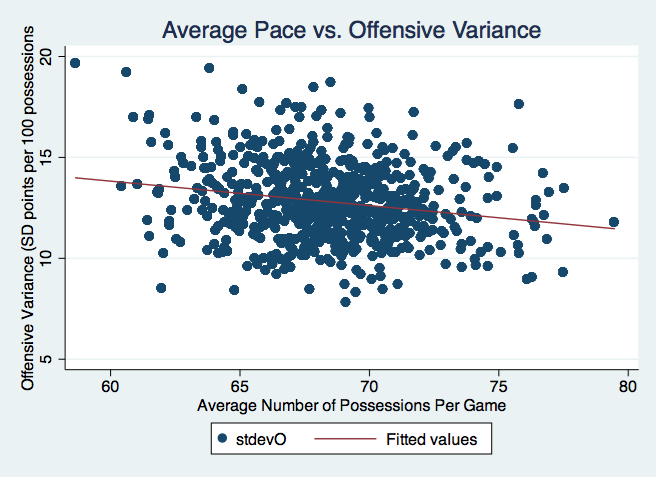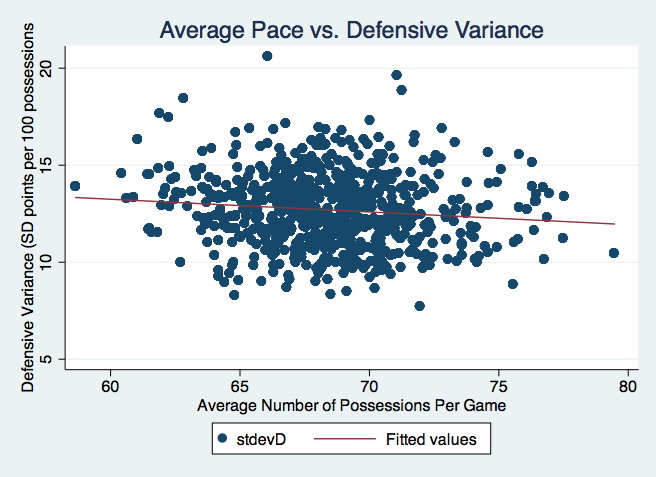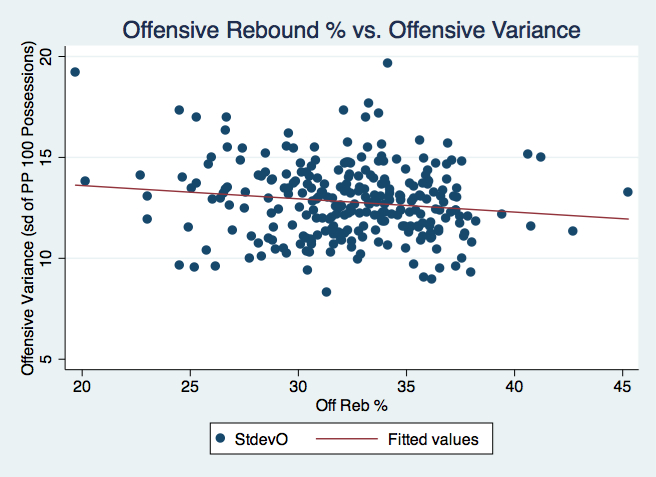4 Teams Whose Pace & Three Point Shooting Make Them Good NCAA Upset Picks
March 2, 2012 - by John Ezekowitz
Over the past few weeks, I’ve written a lot about variance in college basketball, attempting to show why it is important in the NCAA tournament and why you might want to pay attention to it when you make your March Madness upset picks.
But it is not just enough to understand why variance is important; we also need to think about, both theoretically and empirically, what might determine a team’s variance.
When it comes time to make your NCAA bracket picks, you’re not going to be able to actually calculate variance yourself. But you can figure out which higher seeds have low variance traits, and thus might be less likely to be upset.
What Do We Think Should Cause Variance?
Theoretically, there are several factors that should effect variance.
Percent of shot attempts that come from three. Ken Pomeroy has done some fantastic work illustrating that teams have little control over the percentage of made 3-pointers that they attempt or allow, but have more control over how many threes they take or face.
It is easy to remember underdogs that have gotten hot from three and sunk favorites in the NCAA tournament, and while we tend to forget teams that instead miss a bunch of threes and get blown out, we should expect more threes attempted to increase offensive variance. On the other hand, a team that allows fewer three attempts by its opponents should have a lower defensive variance, all else equal.
Pace. Teams that use fewer possessions magnify the results of each possession. They have fewer opportunities to even out bad (or good) series of possessions.
If your opponent catches a couple lucky breaks, that’s more important in a 50-possession game than it is in an 80-possession game.
Offensive rebounding. Offensive rebounding is in part a coaching choice: some coaches, like Pitt’s Jamie Dixon, prioritize it, sending everyone to the offensive glass. Other coaches choose to get back on defense quickly, and do not prioritize offensive rebounding.
Offensive rebounding is significantly negatively correlated with the percentage of shots a team takes from three-point range (r = -.45). For obvious reasons, it is very hard to both shoot a lot of threes and grab a lot of offensive rebounds.
Thus we should expect offensive rebound percentage to be negatively associated with offensive variance. This is because offensive rebounds should generally allow teams to replace possessions with zero points (a missed shot) with possessions that score points, and because teams that rebound well tend not to shoot as many threes.
What Factors Actually Correlate With Variance?
These three ideas were confirmed in the data that I looked at (the 2011 season), but the relationships were not extremely strong.
It turns out to be very hard to predict variance, which makes some sense; 30-35 games is a small sample and a few outlier games may swing variance significantly. Nevertheless, these relationships give us important information about what causes variance.
Interestingly, the relationship between three pointers attempted and offensive variance was much stronger than the one between three pointers allowed and defensive variance. The correlation on %3PA and Offensive Variance was 0.22. This result is puzzling to me. Perhaps it could be because teams have less control over three pointers allowed.
The relationship between pace and variance was as expected. Both offensive and defensive variance were correlated with average pace at r = 0.20. Again, this relationship is not strong, but is significant and matches the theoretical expectation.
Again, the relationship between offensive rebounding and offensive variance is fairly weak (correlation of -0.15), but the direction of the sign is as expected.
NCAA Tournament Bracket Implications
So what should you be looking for in picking lower seeds to pull upsets in the first two rounds?
Teams that play at a plodding pace and rely on shooting threes should have higher variances, all else equal. And as covered before, higher variance is an asset for underdogs.
Here are a few teams who fit that description.
| Team | % of Shots that are 3's | Pace |
|---|---|---|
| Denver | 9th | 326th |
| VCU | 50th | 165th |
| Arizona | 65th | 205th |
| Miami FL | 79th | 262nd |
Denver, who will have to win the Sun Belt Conference Tournament in order to make the NCAA tournament, is the prototypical high variance team. They are coached by Joe Scott, whose offensive pace is glacial and whose system is predicated on threes and more threes.
VCU is another interesting potential pick. Last year’s tournament darling has been quietly playing its best basketball recently, and Shaka Smart has a high variance recipe that might reward you when you fill out your bracket.
Arizona and Miami are two more bubble teams that might barely sneak into the NCAA bracket, but could then reel off a couple of wins due to their high variance playing style.
So when Selection Sunday rolls around, keep these teams in mind as possible upset picks, and pay attention to other teams with low pace and high three point attempts — they could be good squads to roll the dice on.
Printed from TeamRankings.com - © 2005-2024 Team Rankings, LLC. All Rights Reserved.



